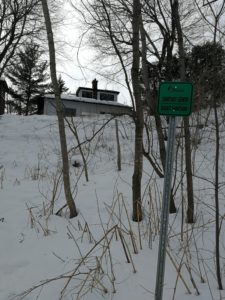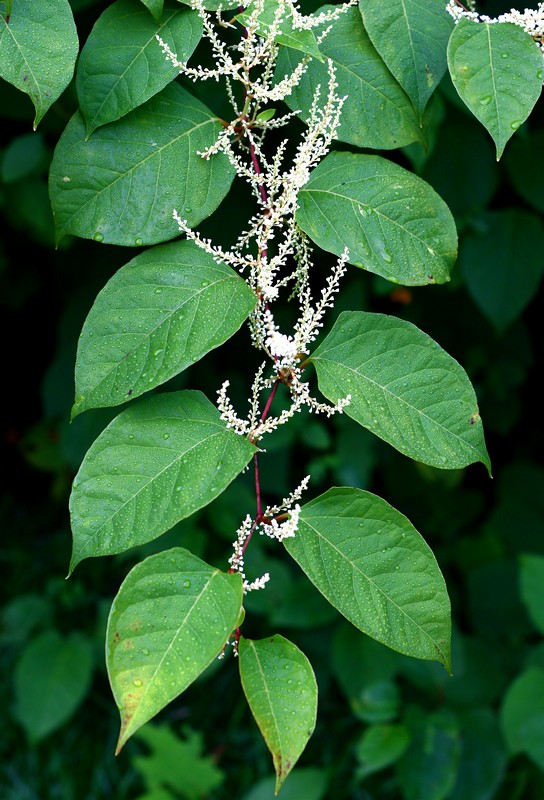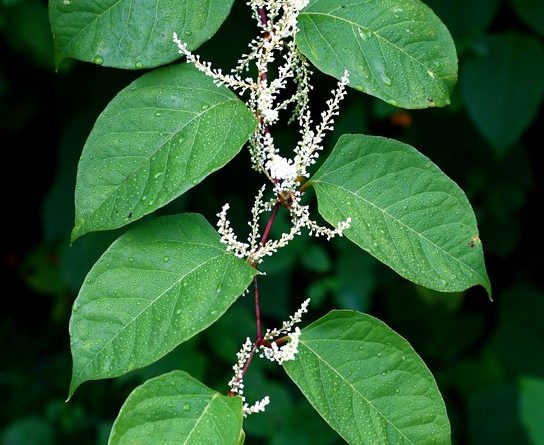Keep your eyes open for invasive weeds in our parks and gardens
Marilyn Whitaker

Photo Marilyn Whitaker
Concerns have been growing about invasive weeds along the Rideau River shoreline as well as in nearby parks, open areas, and private property. This year, the Sandy Hill Tree and Greening Group (SHTG) has organized several virtual meetings of Sandy Hill residents concerned about the spread of invasive weeds such as buckthorns, Japanese knotweed, dog-strangling-vine, garlic mustard, and wild parsnips.
These plants are able to out-compete native plants for resources such as light, moisture and soil nutrients and in turn affect wildlife species that are adapted to native plant communities. For example:
- Garlic mustard can change the soil chemistry, making it less suitable for native plants;
- Dog-strangling-vine and other invasive plants can form dense mats of vegetation;
- Japanese knotweed can form dense thickets of bamboo-like vegetation, and its extensive rhizome (root) system can damage infrastructure;
- Giant hogweed and wild parsnip sap can irritate skin and eyes, while common buckthorn has sharp thorns which can cause injury.
Mapping of areas with invasive weeds has started. Even with the snow-cover of early March, extensive patches of Japanese knotweed can be seen in parts of Strathcona Park, along the riverbank, and across the pathway in private yards, as well as in areas near Robinson Village. Melting snow and ice will no doubt reveal more plants.
Discussions are being held with neighbourhood groups along the Rideau River to find out what they are doing and what has or has not been helpful. Various agencies have been contacted as well.
At this point, there seems to be good information for identifying invasive plants, tracking them, and suggestions about removal. The Ontario Invasive Plant Council (OIPC) was founded in 2007 to provide a coordinated provincial response to the growing threat of invasive plants which are affecting natural areas, agriculture, forestry, recreational areas, and are posing human health and safety issues. Detailed information can be found at ontarioinvasiveplants.ca/resources. Sightings can be reported through their app at EDDMapS or by emailing info@invadingspecies.com.
The Rideau Valley Conservation Authority (RVCA) has brought together government bodies, community groups, and volunteers to monitor and remove invasive species. The City Stream Watch Program began removing targeted species in 2010 and distributing seeds and plants of native species. While Brewer Park and Billings Park have been removal sites, the RVCA wants to keep its focus on stream ecosystems and not expand to other areas.
The City of Ottawa takes measures to control wild parsnip, giant hogweed, as well as poison ivy on city property, generally by spraying. The City’s website has helpful information (search invasive plants at ottawa.ca), but private property owners are responsible for removing these plants from their properties. Active removal or support to groups wanting to remove other invasive plants do not seem to be generally available.
At this point, the SHTG is exploring options through the City for support for removal of invasive weeds, particularly Japanese knotweed. If you would like to help, please email sandyhilltreegroup@gmail.com. Keep an eye out for this plant in your own yard or neighbouring properties. Since it can regrow easily, a workshop on removal do’s and don’ts is being planned for later in the spring. Check the ASH website and future issues of IMAGE for updates.

Photo Liz West via Wikimedia Commons
